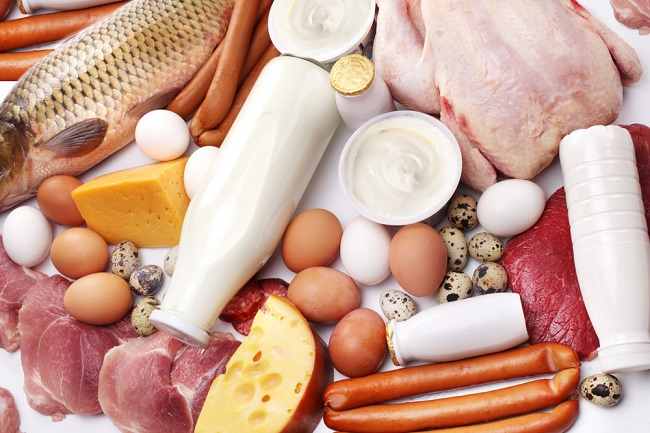Recognize Foods That Often Cause Poisoning
Food poisoning occurs as a result of consuming food contaminated with germs or poisons . Although the cause can be any food, but there are several types of food that often cause poisoning.>
Food poisoning is a health disorder caused by food contaminated with germs or harmful substances. Contamination can occur during processing, storage, and presentation. Based on data from the Food Standards Agency, there are 900,000 cases of food poisoning every year.

Foods that Often Cause Poisoning
Symptoms of food poisoning can be nausea, vomiting, watery or bloody diarrhea, pain and stomach cramps fever, fatigue, muscle aches, and headaches. These complaints can occur several hours, days, or weeks after food is consumed, and can last for several hours to several days.
The most common causes of food poisoning are bacteria, viruses, and parasites that emit toxins and contaminate food. To be more careful, we need to know several types of foods that often cause poisoning, namely:
1. Poultry meat and eggs
Consuming undercooked chicken or duck meat and eggs can increase the risk of food poisoning. Bacteria that are widely found in poultry are Campylobacter and Salmonella. This bacterium is often found in intestines and feathers in birds.
2. Red meat
Meat sold on the market is prone to contain bacteria, such as E. coli, Salmonella, Shigella, and Vibrio. Whereas processed foods, such as ham, bacon, and sausages, are prone to contain Listeria and Staphylococcus aureus bacteria.
Most contamination many occur in pork, beef, buffalo, and goat. Pollution can occur during the process of slaughtering animals, storage in stores, until processing.
3. Non-pasteurized milk
Pasteurization is the process of heating milk at a certain temperature, so it can kill harmful bacteria. When you consume unpasteurized milk, your risk for poisoning will be greater. Cases of raw milk poisoning are reported to occur in many children and adolescents.
4. Seafood or maritime food
Seafood is at risk of containing histamine, which is a poison produced by bacteria in the body of a fish or shellfish that are not fresh. In addition, you also need to be careful of the mercury content in seafood dishes, especially if you consume fish or shellfish from these heavy metal-contaminated waters.
5. Vegetables and fruits
When planted, vegetables and fruits are often exposed to pesticides that are used to prevent the growth of plant pests, such as insects and parasites. If vegetables and fruit are not washed thoroughly, pesticides can be swallowed and endanger health.
Additionally, vegetables and fruits can contain the bacteria Salmonella and E. E. coli. This can happen if vegetables or fruit are planted in areas that are contaminated with animal or human waste.
Tips Select, M M will
To reduce the risk of food poisoning, wash the food thoroughly until it is completely clean and cook until cooked. Good food processing starts from the selection, storage of food according to its type, until the cooking process.
1. Choosing
Don't buy groceries that look doubtful about cleanliness. Especially if the food has been stored at room temperature for too long, because there is a possibility it has been contaminated by germs. Choose foods that are cooked or have gone through the pasteurization process, especially for dairy products, juices, and eggs.
2. Cleaning
Not only does it wash food ingredients cleanly, we also need to wash hands and cooking utensils before processing food. Use soap and running water, or warm water if possible.
3. Separating
To prevent cross-contamination between foods, always separate cooked and raw foods. Store raw foods, such as meat, poultry, fish and seafood, separately from other foods. Meanwhile, when processing it, do not use the same cutting board and knife for vegetables and meat.
4. Cook
Cook the meat or eggs until they are completely cooked at the right temperature. This method effectively kills harmful germs that are in raw foods. If necessary, use a food thermometer that can measure the temperature inside the food, to make sure the food is fully cooked.
5. Store
If the food is not yet cooked or eaten, store it in the refrigerator. If you want to store cooked food outside the cooling cupboard or at room temperature, don't take more than 2 hours.
When you want to consume foods that often cause poisoning, you need to be more careful in choosing and processing them. If you experience symptoms of food poisoning, see your doctor immediately for treatment.
Written by:
Dr. Riana Nirmala Wijaya
Label : Healthy life
Comments
Post a Comment